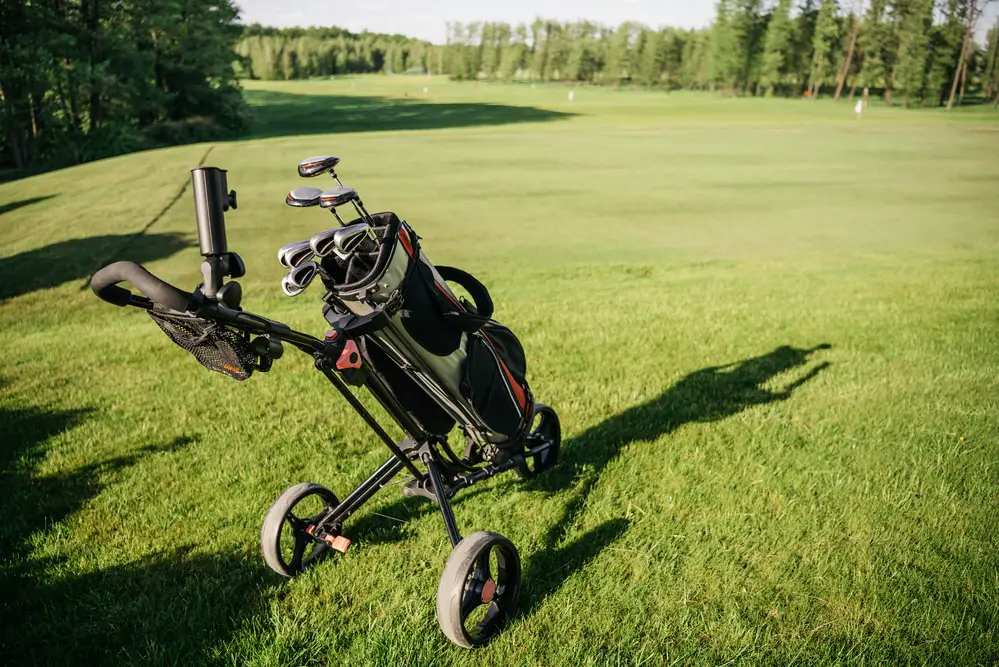Last Updated on May 30, 2023
Do golfers really understand what the different wedge degrees mean and how to choose the right one? Deciding which wedge degree is suitable for your game can be challenging, given the range of choices available. In this blog post, we’ll explore why understanding golf wedge degrees matters and how you can pick the perfect club for yourself. Let’s get started on exploring just how important those little numbers on your clubs actually are.
Table of Contents:
- Understanding Golf Wedge Degrees
- Choosing the Right Wedge Degree
- The Benefits of Different Wedge Degrees
- FAQs in Relation to What Degrees Are Golf Wedges
- Conclusion
Understanding Golf Wedge Degrees
Golfers of all levels understand the importance of having a good set of wedges in their bag. But do you know what the different degrees mean and how they can help improve your game?
The most common wedge types are pitching, gap, lob and sand wedges. Pitching Wedge (PW) is usually the highest lofted club in an iron set with around a 46 to 48-degree loft angle, which helps golfers hit full shots from short distances up to 100 yards. Gap Wedge (GW) has a higher degree than PW, ranging between 50-54 degrees, that helps players hit high approach shots from 70-90 yards away. Lob Wedge (LW) is even higher at 58-62 degrees, and it’s designed for hitting high flop shots over bunkers or other obstacles as well as chipping close to the green. Sand Wedge (SW) has an average loft angle between 54-58 degrees which gives it maximum spin control on soft surfaces like sand traps or wet grass, allowing players to get out of trouble easily.
Choosing the Right Wedge Degree

Golfers often struggle to choose the right wedge degree for their game. Selecting the ideal wedge for your golf game can be a daunting task, considering the abundance of options.
Pitching wedges are the most common type of golf wedge and typically have a loft angle between 44-48 degrees. This makes them great for approach shots from up to 100 yards out, as they provide more backspin than longer irons. They also help golfers hit higher trajectories with greater accuracy when chipping or pitching around the green.
Lob wedges are usually between 54-60 degrees in loft angle and offer maximum spin control on short shots around the green due to their high launch angles. These wedges are designed for players who need extra spin control in order to get close enough to the hole on chips and pitches from tight lies or deep roughs.
Gap wedges have lofts ranging from 50-54 degrees, making them ideal for mid-range approach shots that require precision and distance control without sacrificing spin rate or trajectory height. The gap wedge has become an essential part of any golfer’s bag since it fills in the gap between pitching wedge distances (100 yards) and lob wedge distances (50 yards).
Sand wedges come with either 56 or 58-degree lofts, depending on what you prefer, but both will allow you to dig through sand bunkers like a pro. Sand Wedge features include wide soles that help reduce digging into thick grass while providing maximum forgiveness during full swings, as well as flatter leading edges that help improve contact consistency from all types of lies – even wet ones.
The Benefits of Different Wedge Degrees
Having the right wedge degree in your bag can make a huge difference to your game. Knowing how to choose the correct wedge and understanding why different wedges are important will help you hit better shots on the course.
Pitching Wedges
Pitching wedges are one of the most common types of wedges found in a golfer’s bag, and they usually have lofts ranging from 44-48 degrees. They are designed for full swings and shorter distances (50-125 yards). The pitching wedge is great for getting out of bunkers or hitting approach shots with precision and accuracy.
Gap Wedge
Gap wedges have lofts between 50-54 degrees, making them ideal for those longer approach shots that require more distance than what a pitching wedge can provide (125-150 yards). With its higher loft angle, it’s easier to get more backspin which makes controlling trajectory much simpler when compared to other clubs like irons sets.
Sand Wedge
Sand wedges typically come with 56-60 degree lofts and are designed specifically for bunker play or any shot where you need extra spin around the green. These high-lofted wedges create plenty of backspin due to their low bounce angles; this helps prevent the ball from rolling too far after landing on the green.
Lob Wedge

Lob wedges offer some of the highest degree options available at 60+ degrees, and they allow golfers to hit “flop shots” over obstacles such as trees or sand traps while still having control over their trajectory. This type of club is often used by experienced players who want maximum height without sacrificing accuracy or spin rate off their tee shot, but beginners should be aware that lob wedges take time to practice before using them effectively on the course.
Choosing which wedge(s) best suits your game depends largely on skill level; an average club golfer hits his pitching wedge roughly 100 yards, while an experienced player might hit theirs 130+. It is also important to note that most beginner golfers prefer lower-lofted clubs because it gives them more distance, whereas higher-lofted ones give less yardage but greater accuracy, so make sure you find a certified club fitter who can assess your individual needs when selecting new equipment.
FAQs in Relation to What Degrees Are Golf Wedges
What is a 52-degree wedge called?
A 52-degree wedge is commonly referred to as a gap wedge. It sits between the pitching and sand wedges in terms of loft, allowing golfers to hit shots with greater accuracy from distances of around 80 yards and closer. The gap wedge provides more spin than other wedges, making it easier for players to control their shots and achieve better results on approach shots into greens.
What degree wedges do PGA players use?
PGA players typically use a variety of wedges, including pitching, gap, sand and lob wedges. Pitching wedges are the most common type used by professionals due to their versatility; they can be used for shots from up to 120 yards away. Gap wedges are designed for shots between 80-110 yards, while sand and lob wedges are better suited for short game shots around the green. Professional golfers often carry multiple types of wedges in order to maximise performance on every shot.
What is a 58-degree wedge used for?
A 58-degree wedge is a versatile golf club used for a variety of shots around the green. It can be used to hit high and soft chips, pitches, lobs, flops, and even bunker shots. The loft on this type of wedge makes it ideal for hitting from tight lies or difficult terrain because it creates more spin than lower-lofted wedges, which helps control the ball’s trajectory better. When using this club correctly, players will find that they have greater accuracy with their short game as well as improved distance control when chipping or pitching close to the hole.
Conclusion
Golf wedge degrees are an important factor to consider when selecting the right club for your game. From understanding what degree is best suited for you to choosing from a range of common wedges available on the market today – there’s no doubt that having knowledge about golf wedge degrees can be beneficial in improving your performance and helping you reach your goals. Ultimately, finding the perfect fit between skill level and desired outcome will ensure that every shot counts.


